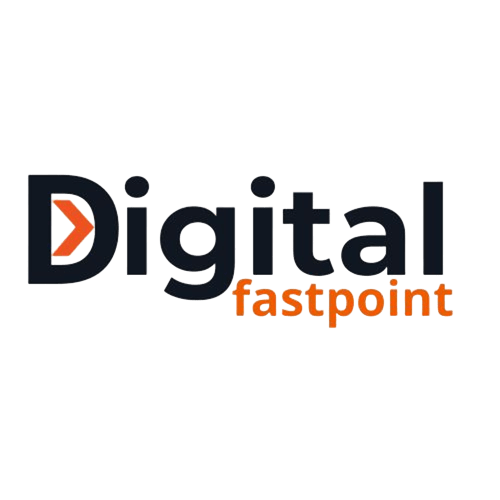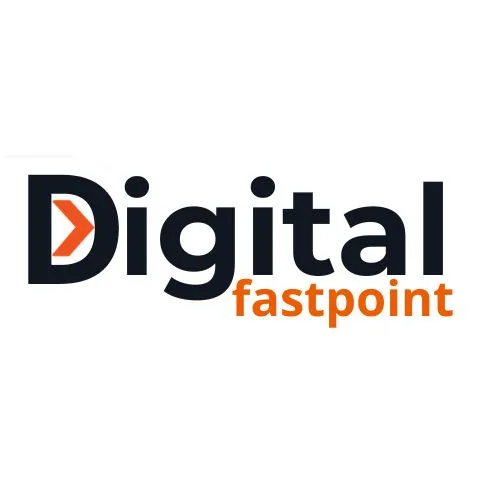Marketing as a Zoomable Concept
Internet Marketing Strategies: Imagine opening Google Earth and viewing our planet from space. From this vantage point, you see the entire world as one unified sphere. As you zoom in, continents become visible, then countries, states, cities, and eventually, individual neighborhoods and houses. Marketing works the same way.
Table of Contents
At the highest level, “marketing” encompasses all efforts to promote products or services. Zoom in slightly, and you’ll see traditional marketing divided into print, television, radio, and digital realms. Zoom in further on digital, and internet marketing emerges with its own distinct landscape.
Internet marketing itself isn’t a single strategy but rather a collection of interconnected approaches—like examining someone’s landscaping after zooming all the way down to street level. While these strategies overlap and complement each other, understanding each one’s unique attributes allows marketers to craft more effective campaigns.
This article breaks down internet marketing into twelve distinct-yet-complementary strategies. It’s important to note that these categories are somewhat “fuzzy” and overlapping. They influence each other in complex ways, and focusing exclusively on just one is unlikely to yield optimal results. The most successful digital marketing campaigns leverage multiple strategies working in concert.
The Twelve Internet Marketing Strategies
SEO (Search Engine Optimization)
SEO forms the core of most internet marketing strategies. It focuses on making your website more attractive to search engines like Google, Bing, and Yahoo, with the goal of ranking higher in organic (non-paid) search results.
SEO encompasses several sub-disciplines:
- On-site SEO involves optimizing your website’s content, structure, and HTML elements (titles, meta descriptions, etc.) to improve visibility for specific keywords.
- Off-site SEO focuses on building authority through backlinks from other reputable websites, citations, and mentions across the web.
- Technical SEO addresses website performance, mobile-friendliness, security, and other back-end factors that influence rankings.
What makes SEO particularly vital is how it influences—and is influenced by—nearly every other internet marketing strategy. High-quality content helps SEO, while good SEO practices ensure your content gets discovered. Social signals may impact rankings, and email marketing might drive traffic that improves engagement metrics.
Content Marketing
Content marketing focuses on creating and distributing valuable, relevant content to attract and engage a specific audience. This includes blog posts, videos, infographics, podcasts, eBooks, whitepapers, and more.
This strategy works hand-in-hand with SEO—search engines reward websites that consistently publish high-quality content addressing users’ needs. However, content marketing extends beyond search engine considerations to build brand authority, educate prospects, and nurture relationships throughout the customer journey.
Many other strategies we’ll discuss, like video marketing and social media marketing, can be considered forms of content marketing when they focus on delivering value rather than direct promotion. The line between content marketing and these other approaches often blurs, demonstrating the interconnected nature of modern digital marketing.
Essential Tools to Power Your Internet Marketing Strategies
To fully harness the 12 internet marketing strategies outlined in this guide, having the right tools at your disposal is crucial. Platforms like Rank Math simplify SEO optimization, Elementor empowers you to build high-converting landing pages, and GetResponse streamlines your email marketing efforts. For privacy and security, NordVPN ensures your campaigns stay protected from digital threats. Incorporating these professional tools into your workflow not only enhances efficiency but also significantly boosts your chances of online success.
PPC (Paid) Marketing
Unlike SEO and some content marketing approaches that can be implemented with minimal financial investment, PPC (Pay-Per-Click) marketing explicitly requires paying for traffic, clicks, or views. This category encompasses search engine marketing (SEM), display advertising, social media advertising, and other forms of paid digital promotion.
PPC offers several advantages over organic strategies:
- Immediate visibility and traffic
- Precise targeting capabilities
- Detailed performance metrics
- Ability to scale quickly with increased budget
However, the moment you stop investing, the traffic typically stops as well. This contrasts with organic strategies that can continue generating results long after the initial investment of time and resources.
Effective PPC campaigns require careful keyword research, compelling ad copy, optimized landing pages, and continuous monitoring and adjustment. When properly managed, PPC can deliver an impressive return on investment while complementing organic marketing efforts.
Social Media Marketing
Social media marketing involves creating and sharing content on platforms where users gather to connect, share information, and engage with others. This strategy leverages the social element of human interaction, encouraging sharing and amplifying reach through network effects.
Major social platforms include:
- Twitter/X
- TikTok
- YouTube
Each platform has unique characteristics, audience demographics, and content formats that work best. Effective social media marketing requires understanding these nuances and tailoring your approach accordingly.
Social media strategies range from organic community building to paid advertising, influencer partnerships, and viral content campaigns. The key to success lies in authentic engagement rather than purely promotional messaging.
Email Marketing
Despite being one of the oldest digital marketing channels, email marketing remains among the most effective. It provides a direct line to interested and engaged prospects and customers, largely independent of third-party algorithms (except for spam filters).
Email marketing requires building a subscriber list through other marketing efforts. This might include lead magnets, newsletter signups, content upgrades, or customer purchases. Once established, email allows businesses to nurture relationships through:
- Personalized messaging
- Targeted offers
- Valuable content
- Sequential campaigns
- Automated workflows
With average ROIs often exceeding 40:1, email marketing proves its worth when executed strategically. Its effectiveness stems from reaching an audience that has explicitly indicated interest and granted permission to communicate.
Video Marketing
Video has emerged as one of the most engaging content formats online. Video marketing involves creating and distributing video content across platforms like YouTube, social media, websites, and streaming services.
This strategy incorporates elements of content marketing and SEO (especially for YouTube, the world’s second-largest search engine). Effective video marketing ranges from educational content and product demonstrations to testimonials, behind-the-scenes glimpses, and entertainment.
The rise of short-form video through platforms like TikTok, Instagram Reels, and YouTube Shorts has created new opportunities for businesses to connect with audiences through quick, engaging content. Meanwhile, longer formats allow for deeper storytelling and education.
Affiliate and Referral Marketing
These related strategies leverage word-of-mouth marketing in structured programs that incentivize promotion.
Referral marketing encourages existing customers to refer friends and family through rewards for successful referrals. This capitalizes on trust within personal relationships to expand customer base with highly qualified prospects.
Affiliate marketing enlists partners (often content creators, bloggers, or influencers) to promote products in exchange for commission on sales or leads they generate. These programs provide trackable links or codes that attribute conversions to specific affiliates.
Both approaches transform satisfied customers and strategic partners into extensions of your marketing team, with compensation aligned to actual business results.
Influencer Marketing
Influencer marketing leverages the trust, authority, and audience relationship that influential figures have built online. Businesses partner with these individuals to reach their engaged followers through authentic promotion.
Unlike traditional celebrity endorsements, influencer marketing often works with micro-influencers (those with smaller but highly engaged niche audiences) as well as major social media personalities. These partnerships can take various forms:
- Sponsored content
- Product reviews
- Account takeovers
- Co-created products
- Brand ambassadorships
Successful influencer campaigns match brand values with the influencer’s established persona and content style. When the partnership feels authentic, audiences respond more positively than to traditional advertising.
Native Advertising
Native advertising combines elements of content marketing and paid promotion. These paid placements are designed to match the look, feel, and function of the platform where they appear, creating a less disruptive user experience than traditional ads.
Common forms of native advertising include:
- Sponsored articles on news sites
- Promoted listings on e-commerce platforms
- “Recommended content” widgets
- In-feed social media ads
- Branded content partnerships
The key to effective native advertising is providing genuine value while maintaining transparency about the promotional nature of the content. When done well, native ads can overcome ad blindness and ad-blocking while delivering information that audiences genuinely appreciate.
App Marketing
With mobile devices accounting for more than half of global web traffic, app marketing has become a distinct discipline. This strategy focuses on promoting mobile applications, encouraging downloads, and fostering continued engagement.
App marketing encompasses:
- App store optimization (ASO)
- Mobile advertising
- In-app advertising
- Push notifications
- App store featuring
- Cross-promotion
Beyond initial downloads, successful app marketing addresses the entire user lifecycle, from onboarding to regular engagement and monetization. This requires understanding mobile user behavior and creating seamless experiences across channels.
Remarketing
Remarketing (also called retargeting) focuses on re-engaging people who have already interacted with your brand but haven’t completed a desired action. This might include website visitors who didn’t purchase, email subscribers who haven’t opened recent messages, or app users who haven’t returned.
By targeting these “warm” audiences with customized messaging, remarketing can significantly improve conversion rates. Common remarketing tactics include:
- Display ads following website visitors across the web
- Email sequences for abandoned carts
- Social media ads to past visitors
- YouTube ads to channel viewers
Remarketing can be applied as an enhancement to virtually any other marketing strategy, creating multiple touchpoints that guide prospects toward conversion.
Crossover Marketing
Crossover marketing bridges the gap between online and offline strategies. While this article focuses on internet marketing, the reality is that many businesses need both digital and traditional approaches working together.
Examples of crossover marketing include:
- QR codes on print materials leading to websites
- Hashtag campaigns for in-person events
- TV ads directing viewers to online offers
- Direct mail with personalized URLs
- In-store digital experiences
These integrations create seamless customer journeys that acknowledge the multi-channel nature of modern consumer behavior. Effective crossover marketing eliminates silos between traditional and digital teams, focusing instead on coordinated campaigns that leverage each channel’s strengths.
Conclusion: Interconnectedness and Getting Started
As we’ve explored these twelve internet marketing strategies, the interconnectedness between them becomes clear. Each strategy operates with varying levels of scope and interplay with others. Success in one area often creates positive momentum for related strategies.
For example, great content marketing improves SEO performance, which drives more traffic that can be captured for email marketing, which then promotes social media content… creating a virtuous cycle of growth.
The key is recognizing which strategies align best with your business goals, audience preferences, and available resources. Rather than attempting to implement all twelve simultaneously, start with the core strategies most relevant to your situation and expand methodically.
Remember that digital marketing is both art and science. Data should inform your decisions, but creativity and authentic human connection remain essential for standing out in increasingly crowded digital spaces.
If you’re feeling overwhelmed by the options or unsure where to begin, consider working with experienced professionals who can assess your specific needs and develop a customized approach. The digital landscape continues to evolve, but these fundamental strategies provide a solid foundation for marketing success in the online world.
internet marketing satrategies internet marketing strategies internet marketing strategies internet marketing strategies internet marketing strategies internet marketing strategies internet marketing strategies internet marketing strategies internet marketing strategies internet marketing strategies


